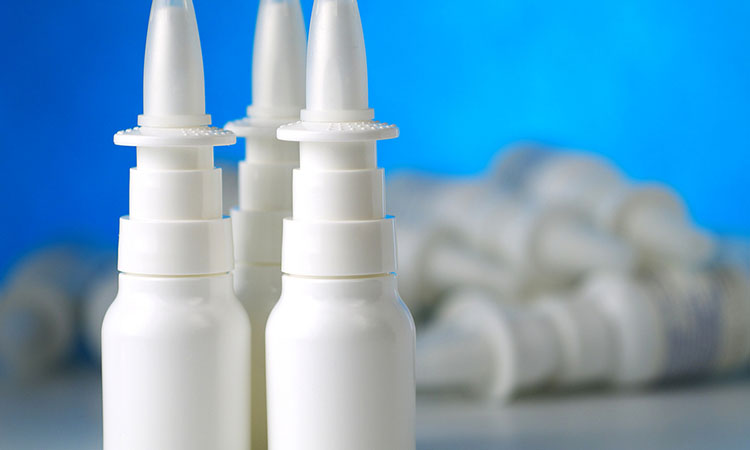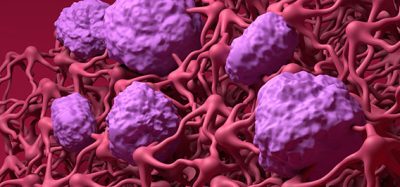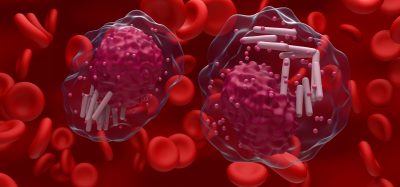The nose-brain pathway: the intranasal administration of drugs to the CNS
Posted: 17 November 2022 | Izzy Wood (Drug Target Review) | No comments yet
Japanese scientists underwent a study exploring trigeminal nerves and how the intranasal administration of the novel glucagon-like peptide-2 can produce antidepressant effects in mice.


A team of researchers from Tokyo University of Science, Japan, have developed a novel drug to test its uptake efficacy by the central nervous system (CNS). Intranasal administration has increased in popularity as a non-invasive approach to deliver drugs directly to the brain. This approach involves the respiratory or olfactory epithelia of the nasal mucosa through which the drugs reach the CNS.
Offering more insight, Professor Chikamasa Yamashita stated: “In a previous study, we combined functional sequences (a membrane permeability-promoting sequence [CPP] and an endosomal escape-promoting sequence [PAS]) to glucagon-like peptide-2 (GLP-2), which is effective against treatment-resistant depression, so that it can be efficiently taken up by neurons. Using this, we aimed to construct a nose-to-brain system mediated by the trigeminal nerve in the respiratory epithelium.”
While studying the uptake of this novel PAS-CPP-GLP-2 by the CNS, the team noted that its antidepressant effects via administration remained on par with intracerebroventricular administration at identical doses. Thus, nose-to-brain transfer mechanism explains why intranasally administered GLP-2 derivatives show drug effects at the same dose as intracerebroventricularly administered GLP-2 derivatives.
The team performed intracerebroventricular and intranasal administration of PAS-CPP-GLP-2 into mice. The amount of drug transferred to the whole brain was quantified by enzyme-linked immunosorbent assay (ELISA).
Surprisingly, the ELISA revealed that a much smaller amount of intranasally administered PAS-CPP-GLP-2 reached the brain than intracerebroventricularly administered PAS-CPP-GLP-2. However, both intracerebroventricular and intranasal administration showed efficacy at the same dose.
This is attributed to the fact that intracerebroventricular administration introduces drugs to the place of origin of CSF (ventricle), causing them to diffuse into the CSF and spread through the brain. Since the CSF is present in the spaces outside the capillaries of the brain, the team saw that a large portion of PAS-CPP-GLP-2 was likely to stay there without being transported to its working sites of action.
On the other hand, nasally administered GLP-2 derivatives were rapidly taken up by the trigeminal nerve of the respiratory epithelium and efficiently reached the site of action while transiting neurons.
Yamashita explained: “This suggests that the peptide delivered to the site of action by intracerebroventricular administration is present in large amounts in the brain but only in very small amounts, as it remains in the perivascular space. On the other hand, intranasally administered PAS-CPP-GLP-2, unlike intracerebroventricular administration, may be transferred to the site of action without passing through the CSF or perivascular space.”
These results prompted the team to identify the central transfer drug delivery route following intranasal administration. This route involved the principal sensory trigeminal nucleus, followed by the trigeminal lemniscus of the trigeminal nerve, and led to the drug’s working sites.
Intranasal drug may be the future of depression treatments
Groundbreaking study succeeded in the intranasal delivery of an antidepressant peptide-based drug to the brain in mouse models.
Finally, it was discovered that the migration of PAS-CPP-GLP-2 via nerve transit was the reason behind its pharmacological activity despite its low levels in the brain upon intranasal administration.
Yamashita concluded: “This is the world’s first drug delivery system that allows intranasally administered peptides to be delivered to the CNS via nerve cells, delivering peptides to the site of action with the same efficiency as intracerebroventricular administration… Current data suggests the possibility of extending the use of this system from treating depression to delivering drugs in patients with Alzheimer’s disease. It is therefore expected to be applied to neurodegenerative diseases with high, unmet medical demand.”
Related topics
Drug Delivery, Drug Discovery, Drug Discovery Processes, Research & Development
Related organisations
Tokyo University of Science
Related people
Professor Chikamasa Yamashita








